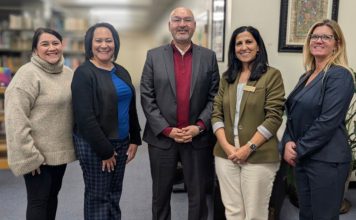Mid-September: the weather is finally cooling, our baby is off
to Cal Poly, and for the first time in 18 years, I am not
homeschooling. I still teach homeschooled students Algebra I and II
at Live Oak Academy in San Jose. Thus my year is still broken, not
by seasons nor by the fiscal calendar, but into the two unequal
parts of school year and summer.
Mid-September: the weather is finally cooling, our baby is off to Cal Poly, and for the first time in 18 years, I am not homeschooling. I still teach homeschooled students Algebra I and II at Live Oak Academy in San Jose. Thus my year is still broken, not by seasons nor by the fiscal calendar, but into the two unequal parts of school year and summer.
I read with bemused interest and sympathy that the Gilroy Unified School District is grappling with the school year calendar. Currently GUSD starts in late August and finishes in mid-June. They propose to start in mid-August and finish in early June.
The benefit would be that the semester break would coincide with winter vacation, instead of coming three weeks into January.
I am interested because I have been dealing with my own school calendar for so many years, sympathetic to some factions in the debate, and bemused because the vast amount of effort being expended seems like overkill for such a simple question.
Naturally, the school district’s decision is complicated by the vast number of stakeholders.
In contrast, when I began homeschooling, I had sole authority. My goals were few: to maximize learning and have a good long summer vacation. Consequently, we began on Sept. 1 and finished on May 31. We took few holidays and vacations: three days at Thanksgiving, two weeks for Christmas, and one week at Easter. Thus, we generally packed in more than 200 school days and enjoyed three solid months of summer vacation.
As the kids grew, we joined co-ops and classes and eventually Gavilan College. Although their out-of-home education followed the dictates of the other venues, our in-home school calendar remained September through May. I kept that basic schedule even when I began teaching my in-home higher math classes to other people’s homeschooled children, though I worked my hours around those of the other homeschool mom who was similarly teaching English.
I gave finals at the end of May, naturally. Mid-terms I gave just before Christmas break. This way the material would be fresh in my students’ minds rather than forgotten in the joyous noel. This made my “semesters” of unequal length, but so what? My other-people’s-homeschooled students were sometimes startled to realize that we took so few holidays. What about President’s Day? Martin Luther King Day? Veteran’s Day? I would sweetly ask how they planned to celebrate. If they were going to march in a civil rights demonstration or visit a VA hospital, I would give them the day off. They never had any plans other than sleeping late or perhaps skiing. The schedule marched on. And when May 31st rolled around, they were happy to be finished so early.
Now I work for LOA, which also operates September to May, as decided by the headmaster and board of directors. Although the official semester break is in January, I persist in giving my mid-terms before Christmas vacation. My students appreciate this; they can start the next chapter fresh in January without an algebra midterm looming before them.
Gilroy Unified has a constraint: the state requires 180 days of instruction. There are not enough days between Sept. 1 and Dec. 24 to offer 90 days of instruction, even if Thanksgiving, Veterans Day, and Labor Day were included. Gavilan College revamped its schedule to consolidate an entire semester between September and Christmas, by paring down to a 16-week semester, with more instructional minutes per class per week. That is not an option at the K-12 level. Most classes at the high school level are year-long classes.
Those teachers could do as I do: ignore the artificial semester break in January and give their midterms before Christmas. The teachers of semester-long AP classes, such as econ and government, have a rough time regardless, because the AP exams are held the first two weeks of May. If the class is held first semester, the students have four months to forget all they learned. If the class is held second semester, the students have to learn 90 days of college level material in approximately 65 days.
Were I GUSD, I would survey those teachers, and base the entire school year on their consensus.










